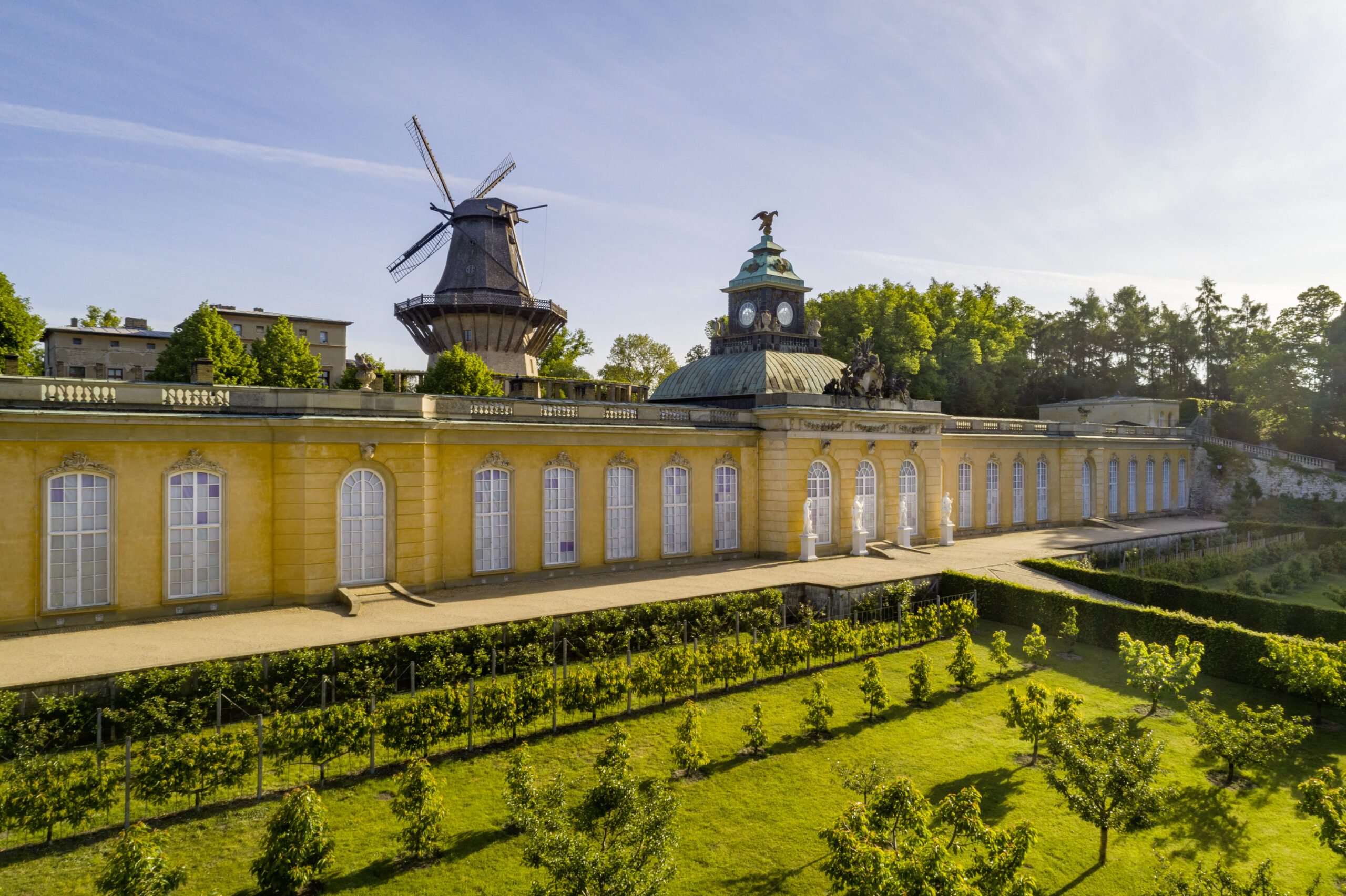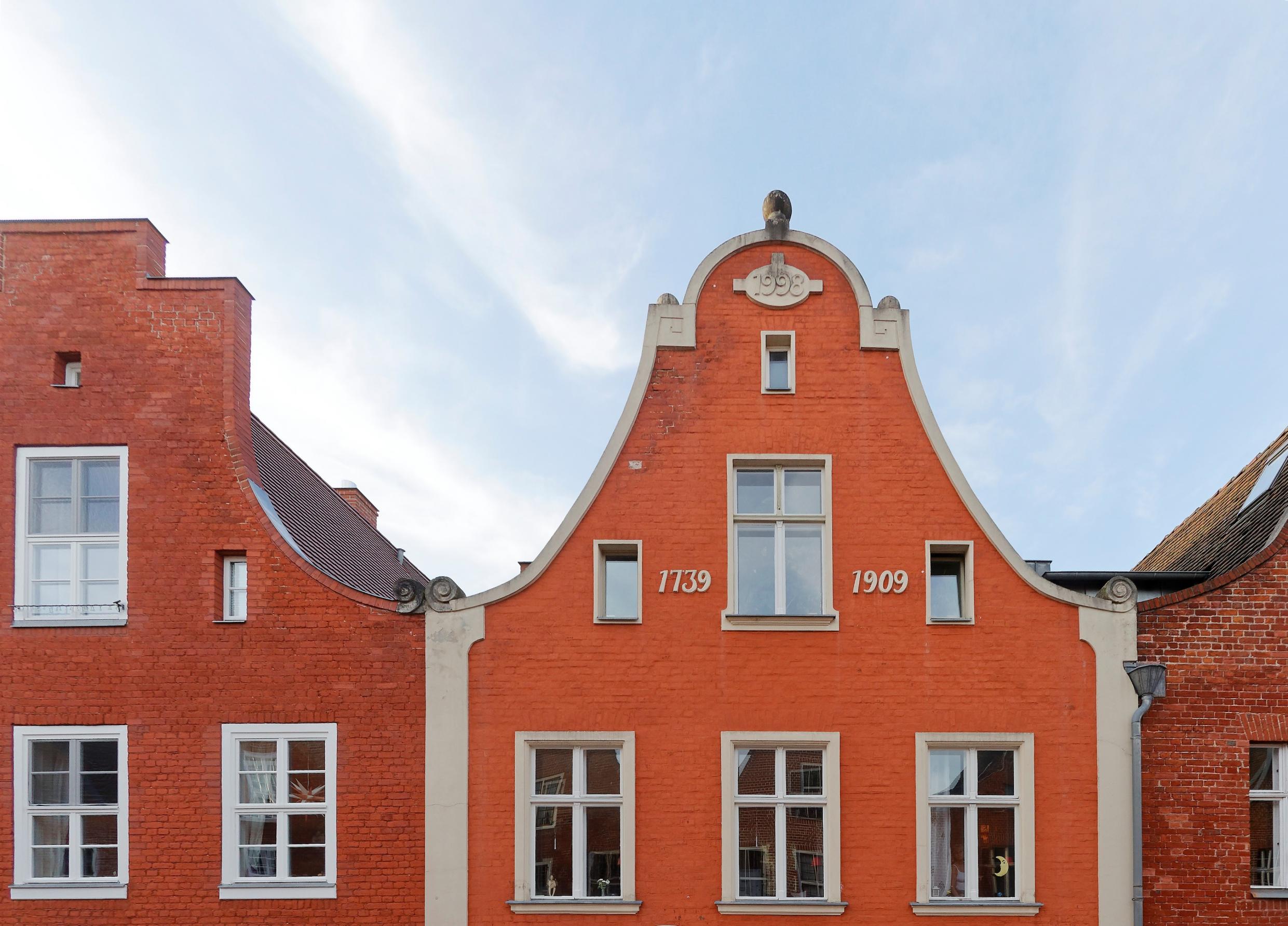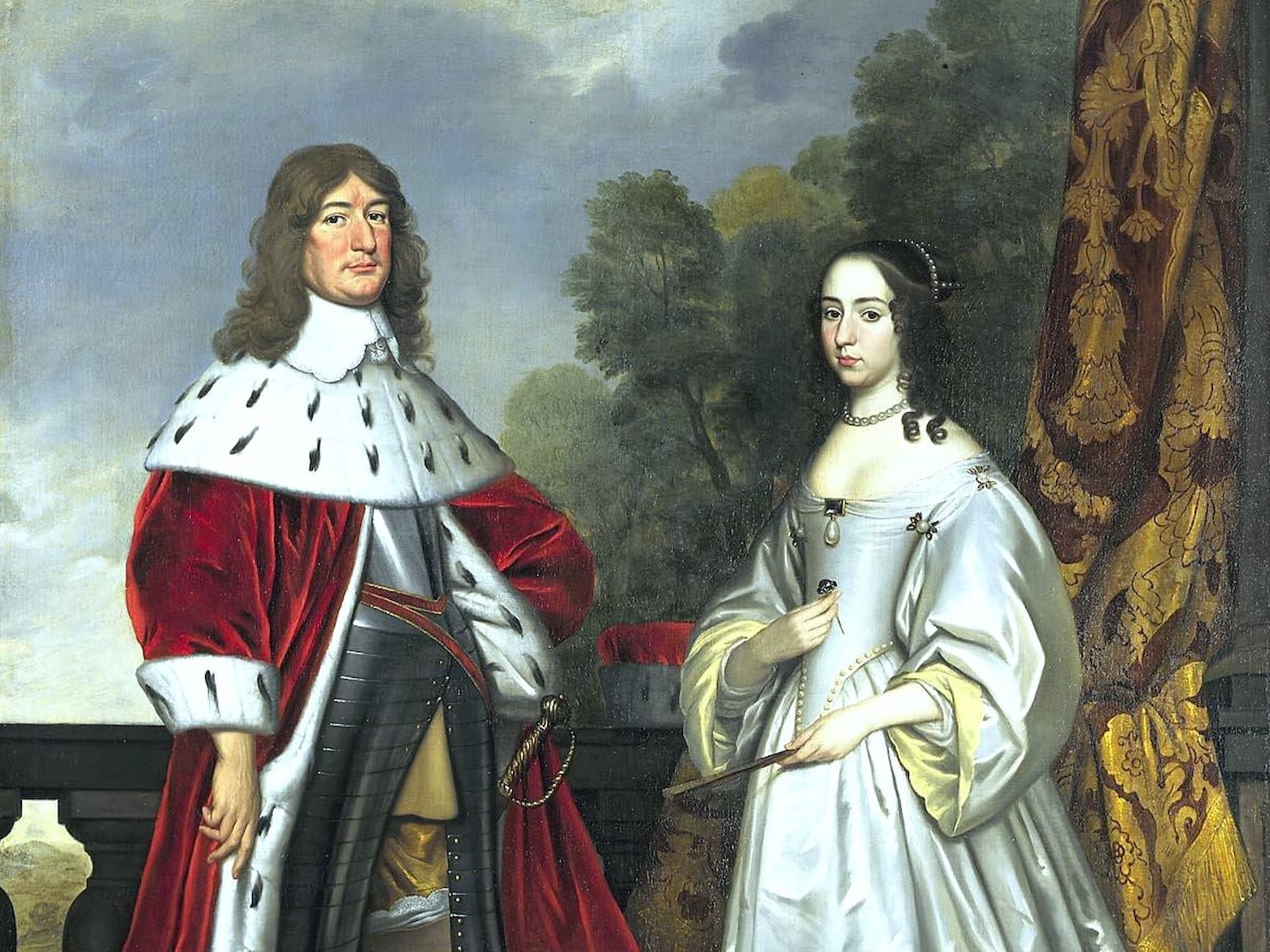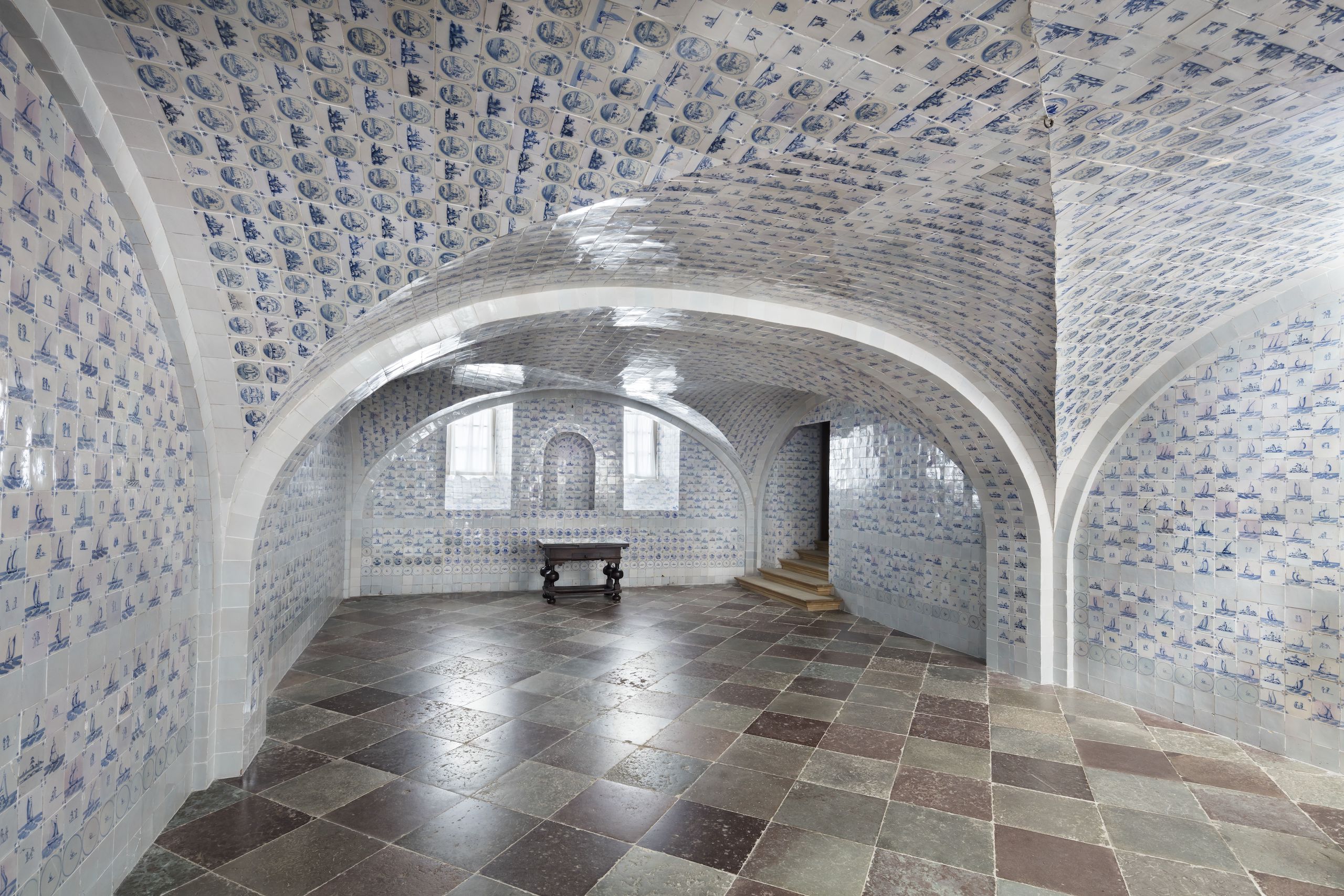
Historic Mill of Sanssouci
The chief building director and Dutchman Jan Bouman confidently stated that “the local builders do not understand the mechanics” when he submitted the construction documents for a double oil mill in 1761. He precisely analyses the reason for the lack of skill of local master builders, who only implemented the traditional knowledge of the millers.

Jan Bouman and the carpenter Adrian den Ouden, who arrived in Potsdam together, were involved in numerous mill construction projects. As entrepreneurs, they were often financially involved. To produce the then popular pearl barley, den Ouden also imported suitable millstones and recruited a miller. Special mills, such as the sewing needle mill, were built on the orders of the king, who wanted to profit from the transfer of knowledge for Brandenburg.
Although the Historic Mill is usually associated with Sanssouci, it is actually six years older than the palace. In 1737, the miller Johann William Ludewig Graevenitz received permission to build a post mill as part of the windmill construction program for the growing city. In the mid-eighteenth century, twenty-one mills supplied the needs of 15,500 inhabitants in Potsdam.
When construction began on the palace, the miller complained about the building activities and the trees in the park to Frederick II, giving rise to the legend of the rebellious miller of Sanssouci. Subsequent owners of the mill were also litigious, and sought to have their lease remitted.
The dilapidated post windmill was replaced by a towering smock mill built by master carpenter Cornelius Willem van den Bosch. His father had come to Potsdam as a grenadier and carpenter; Cornelius Willem himself, however, learned the art of mill-building in the Netherlands. When he died in the middle of construction, his son Christian Ludwig completed the mill, enabling the miller Carl Frederick Vogel to begin operation in 1791. The van den Bosch family worked as master carpenters in Potsdam for a century and a half. Christian Ludwig was a member of the first city council in Potsdam.
Under Frederick William IV, the windmill and its environs were renovated in the Romantic style and the mill ceased to be functional. In 1861, the Historic Mill was opened as a museum of technology, with inventory including three mill gears, disengaging devices, a sack elevator, and shaking screens.
In 1945, the windmill burned down to its base in the battles of World War II. Initial plans for reconstruction were developed in the late 1970s, and in 1983 the Chamber of Trade began work on the project. Ten years later, the exterior of the mill had been reconstructed, and since then the technology has continuously been improved. Today, in addition to its function as a museum, the windmill once again produces flour.
– Susanne Marok, Mühlenvereinigung Berlin-Brandenburg e.V.

This item was taken from the audio walk “Holland in Potsdam”, which was created on the occasion of the exhibition “Clouds and Light. Impressionism in Holland” (8 July – 22 October 2023) and leads to 20 different places in Potsdam with a Dutch connection. Like its predecessor projects “Italy in Potsdam” and “France in Potsdam”, the city tour is permanently available as a free audio tour on the Barberini App and will also be published in the course of 2023 as a art guide in the series of publications of the Stiftung Preußische Schlösser und Gärten.
Header Image: New Chambers and the Historic Windmill │ Photo: SPSG, Reinhardt und Sommer



